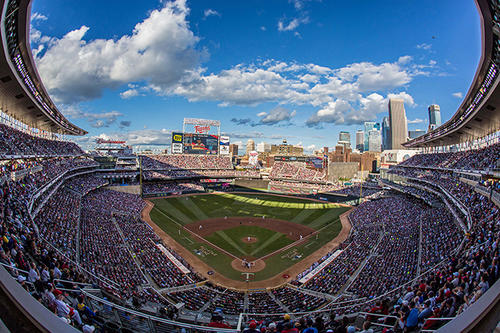
A vibrant presence has been moving through the stands at recent Major League Baseball (MLB) All-Star Games. Behind flashes of green hats and T-shirts are dedicated University of Minnesota students on the Green Team, armed with gloves and color-coded bags, helping fans accurately pitch their recyclable and compostable waste.
During All-Star Week in Cincinnati last summer, Green Teams helped to divert more than a ton of recyclables from landfills.
Now a third class is gearing up for a summer of All-Star Game experience. About 60 students are traveling to this year’s game in San Diego.
“Every year the program grows,” says Tiffany Richardson, sport management lecturer in the School of Kinesiology. Richardson helped to develop the relationship that allowed U students to be part of the Green Team in 2014 when the All-Star Game came to Target Field in Minneapolis.
Sports sustainability isn’t only about recycling and composting at games. The growing area also includes efforts in renewable energy, healthier food, water efficiency, safer chemical use, and species preservation. Target Field has its own sustainability initiatives—such as water-efficient landscaping and recycling stations. But that can’t prevent all fan-generated trash.
Richardson says that representing the U of M and furthering sustainability efforts makes the All-Star Green Team experience meaningful and allows students to play a part in the bigger picture of sports sustainability.
“We just expect everybody to work hard and know why they’re there first,” she says, “and to have fun and advance the mission of the program.”
- Categories:
- Agriculture and Environment





